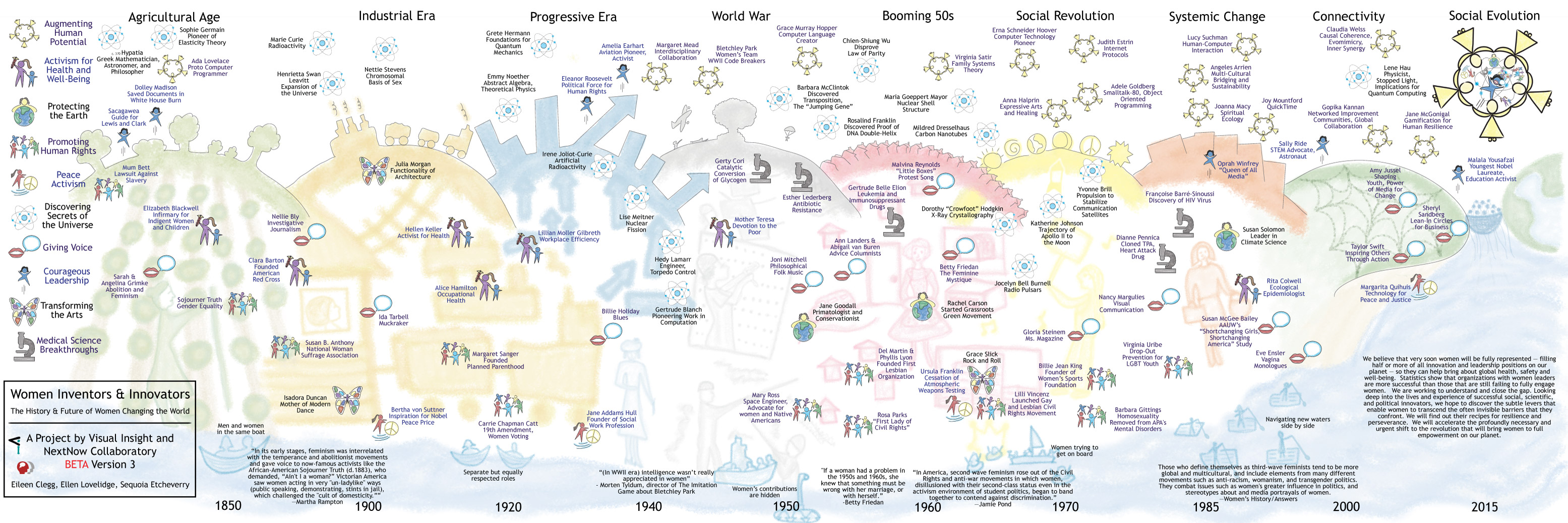
Okay, here is a 1200-word article in English about the legends of America, written in a journalistic style and focusing on a timeline of women’s presence and influence within these narratives.
Echoes and Empowerments: Tracing Women Through America’s Legendary Landscape
America, a nation forged in diverse experiences and grand narratives, is a crucible of legends. From the mystical tales of indigenous peoples to the larger-than-life figures of the frontier, and the chilling urban myths of modernity, these stories serve as cultural touchstones, reflecting our aspirations, fears, and collective identity. Yet, within this rich tapestry, the presence and portrayal of women have evolved dramatically, shifting from the ethereal, often unseen, to the celebrated, the defiant, and the actively myth-making. This article embarks on a journalistic journey through America’s legendary landscape, specifically tracing the "women timeline" – how female figures, their roles, and their stories have shaped, and been shaped by, the enduring myths of a nation.

The Sacred Earth and Early Shadows: Indigenous Roots and Colonial Encounters (Pre-1800s)
Long before European settlers cast their shadows, the North American continent hummed with the vibrant legends of its Indigenous peoples. Here, women often occupied central, powerful, and sacred roles. Figures like the Earth Mother (present in many tribal traditions), Spider Woman (a Navajo creator deity who spun the universe), or the Corn Maidens (Pueblo figures representing fertility and sustenance) were not just characters; they were foundational to cosmology, morality, and survival. These legends often celebrated women as givers of life, wisdom keepers, and integral forces of balance within the natural world. Their power was inherent, revered, and deeply intertwined with the land itself.
"In many Native American mythologies," explains Dr. Gloria Steinem, a scholar of Indigenous cultures, "women are not secondary figures; they are primary creators, culture heroes, and sacred guardians. Their legends reflect societies where gender roles, while distinct, often carried equal weight and spiritual significance."
However, with the arrival of European colonists, a different narrative began to emerge. Early American legends, often rooted in Puritanical beliefs and frontier hardships, frequently cast women in more restrictive, albeit sometimes pivotal, roles. The story of Pocahontas is perhaps the most famous, albeit complex and controversial, example. Originally a young Powhatan girl, her legend morphed over centuries into a romanticized figure who saved Captain John Smith, becoming a symbol of reconciliation and "civilization." Critically, this narrative often stripped her of her own agency and identity, reframing her through a colonial male gaze.
Then there are the chilling legends born from fear and superstition, like those surrounding the Salem Witch Trials of the late 17th century. Here, women were not heroes but victims and scapegoats, accused of witchcraft and demonized for defying societal norms or merely being vulnerable. These tales, while not heroic, underscore a dark chapter where female power was feared, repressed, and often brutally punished. The legend of the "witch" became a cautionary tale, limiting women’s perceived roles and public expression for generations.
Forging a Nation: Frontier Women and Folk Heroines (1800s – Early 1900s)
The 19th century saw the birth of quintessential American folk heroes – larger-than-life figures like Paul Bunyan, John Henry, and Johnny Appleseed. These were often solitary, physically imposing men conquering vast landscapes or industrial challenges. In this predominantly male-dominated legendary landscape, women’s roles were often relegated to the background: the wife waiting at home, the domestic anchor, or, occasionally, the object of affection.
Yet, even in these narratives, exceptional women began to carve out their own legendary spaces. Molly Pitcher, a composite figure from the Revolutionary War, symbolizes the brave women who supported soldiers, carrying water to the wounded and even taking up arms herself. Her legend, while tied to male conflict, celebrated female courage and resilience in a time of national crisis.

As the nation expanded westward, the frontier brought forth women who defied convention. Sacagawea, the Shoshone interpreter and guide for the Lewis and Clark expedition, is a genuine historical figure whose invaluable contributions became the stuff of legend. Her knowledge of the land, languages, and survival skills were critical, though her story was often overshadowed by her male counterparts for centuries. Her legend, now rightfully re-evaluated, highlights the essential, active roles women played in westward expansion.
And then there were the Wild West figures like Calamity Jane. A frontierswoman, scout, and sharpshooter, she dressed in men’s clothes, rode horses, and drank whiskey, living a life that shattered the Victorian ideals of femininity. Her legend, a mix of fact and flamboyant self-promotion, embodies a fierce independence and a refusal to be confined by societal expectations, becoming an icon for untamed spirit. Even in the highly fictionalized tales of Pecos Bill, his wife, Sue, was no shrinking violet; she rode a giant fish, lassoed cyclones, and was a match for Bill’s outrageous exploits, showcasing a desire for female characters with agency and strength.
The Roaring Twenties to Mid-Century Shifts: New Roles, New Legends (Early 1900s – 1960s)
The 20th century ushered in rapid social change, and with it, new avenues for women to enter the legendary spotlight. The "Roaring Twenties" brought the flapper – a legend of rebellion against Victorian strictures, symbolizing newfound freedom in dress, social behavior, and a more active public life. While not a singular hero, the flapper represented a collective female challenge to the status quo.
The Great Depression and World War II further transformed women’s roles, giving rise to figures like Rosie the Riveter. A cultural icon born from propaganda posters, Rosie represented the millions of women who entered the workforce during the war, taking on traditionally male jobs in factories. Her legend celebrated strength, capability, and patriotism, temporarily shattering gender barriers and showcasing women as vital economic and national assets. Though many women returned to domestic roles after the war, Rosie’s image remained a powerful symbol of female empowerment and capability.
This era also produced true legends who broke barriers in the skies. Amelia Earhart, the pioneering aviator, became an international legend through her daring flights and adventurous spirit. Her mysterious disappearance only cemented her mythic status, transforming her into an enduring symbol of courage, ambition, and the pursuit of dreams against all odds. Earhart’s legend was one of pure, unadulterated achievement, unburdened by domesticity or male counterparts.
Modern Mythologies: Activists, Icons, and Reclaiming Narratives (1960s – Present)
The latter half of the 20th century, propelled by the Civil Rights Movement and the Women’s Liberation Movement, saw a profound shift in how women were perceived and how their stories were told. Women were no longer just the subjects of legends but active creators of new narratives and, increasingly, legends in their own right.
The Civil Rights era birthed real-life legends like Rosa Parks, whose courageous refusal to give up her bus seat ignited a movement. Her quiet defiance became a powerful legend of resistance, demonstrating how individual acts of courage could spark profound societal change. Similarly, women became central figures in the fight for equality, their leadership and activism shaping a new kind of American heroism.
In contemporary urban legends, while many figures like Bigfoot or the Mothman remain gender-neutral or implicitly male, there’s a growing awareness of female protagonists in horror, sci-fi, and fantasy that challenge old tropes. The "final girl" in horror films, for example, became a sub-legendary figure of resilience and survival, often outsmarting or outlasting her male counterparts.
The 21st century has continued this trajectory, with the internet acting as a powerful amplifier for new legends and a platform for re-evaluating old ones. Figures like Ruth Bader Ginsburg, a Supreme Court Justice, transcended her legal role to become a cultural legend, celebrated for her tireless fight for gender equality and her unwavering commitment to justice. Her image, her "dissent collar," and her sharp wit cemented her as a modern American icon, inspiring millions.
Today, the "women timeline" in American legends is vibrant and diverse. We see the rise of female superheroes like Wonder Woman, Captain Marvel, and Black Widow, who are not just sidekicks but lead complex narratives, embodying strength, intelligence, and moral fortitude. We witness the celebration of female pioneers in STEM, politics, and the arts, whose achievements inspire new generations and become the legends of tomorrow. Moreover, there’s a concerted effort to reclaim and reinterpret historical narratives, giving voice to the women whose contributions were historically minimized or ignored. The true stories of Sacagawea, the unvarnished realities of Pocahontas, and the myriad of unsung female heroes are now being brought to the forefront, enriching America’s legendary tapestry.
Conclusion: An Evolving Legacy
America’s legends are living entities, constantly evolving to reflect the nation’s changing values and aspirations. The journey of women through this legendary landscape mirrors their journey in American society itself: from revered, almost mythical figures in Indigenous cultures, to silent background players, then to exceptional trailblazers, and finally, to active protagonists, leaders, and storytellers.
The "women timeline" reveals not just a shift in representation, but a profound expansion of what it means to be a hero, a pioneer, or a powerful force in the American imagination. As new challenges arise and new stories unfold, the legends of America will continue to be shaped by the diverse voices and experiences of all its people, with women standing firmly at the forefront, crafting myths that inspire, challenge, and endure. The echoes of the Earth Mother and the roar of Rosie the Riveter converge, promising a future where female legends are not just exceptions, but integral, undeniable threads in the ongoing American epic.


